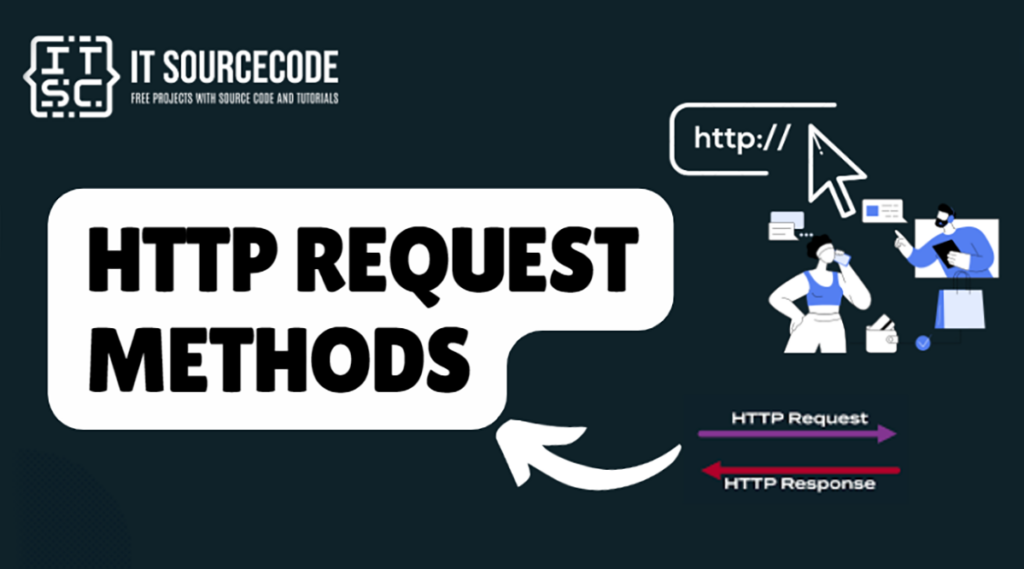What is HTTP?
HTTP, which stands for Hypertext Transfer Protocol, is used to facilitate interactions between servers and clients.
HTTP operates on a request-response model in a client-server architecture.
Typically, a client, such as a web browser, sends an HTTP request to the internet.
This request is received by a web server, which then executes an application to handle the request.
The server subsequently sends back an HTTP response to the browser.
The client, or the browser, then receives this response.

What are HTTP request methods?
HTTP request methods, sometimes referred to as HTTP verbs, indicate the specific action to be performed for a particular resource.
There are typically nine HTTP request methods.
The most commonly used HTTP request methods are the following:
Get, Post, Put, Patch, and Delete.
The rest of the HTTP request methods are the following:
Head, Options, Trace, and Connect.
Different types of HTTP Request Methods
Here are the nine HTTP request methods and their syntax:
GET
The GET method requests is used to retrieve data from the specified resource.
Important things you need to know about the Get method:
- GET requests can be saved in the cache.
- Browser history keeps GET requests.
- You can bookmark GET requests.
- Don’t use GET requests for private data.
- GET requests have size limits.
- GET requests only ask for data, they don’t change it.
Syntax:
GET /index.htmlPOST
The POST request method is used to send or submit data to the specified resource.
Important things you need to know about the Post method:
- POST requests aren’t stored in the cache.
- Browser history doesn’t keep POST requests.
- You can’t bookmark POST requests.
- There are no size limits for POST requests.
Syntax:
POST /testPUT
The PUT method is used to alter the data on the server. It substitutes all the content at a specific location with the request payload.
Syntax:
PUT /new.html HTTP/1.1
PATCH
The PATCH method is quite similar to the Put Method. it is used to alter a portion of the data. Only the content you wish to change will be replaced.
Syntax:
PATCH /file.txt HTTP/1.1
DELETE
The DELETE method is used to delete or remove the data from the server at a specified resource.
Syntax:
DELETE /file.html HTTP/1.1
HEAD
The HEAD method is like the Get request method that asks for a response but it doesn’t include the response body.
Syntax:
HEAD /index.html
CONNECT
The CONNECT method is used to sets up a tunnel to the server that’s recognized by the target resource.
Syntax:
CONNECT www.example.com:443 HTTP/1.1
OPTIONS
The OPTIONS method outlines the communication options for the designated resource.
Syntax:
OPTIONS /index.html HTTP/1.1
OPTIONS * HTTP/1.1TRACE
The TRACE method is used to execute a message loop-back test following the route to the specified resource.
Syntax:
TRACE /index.html
Conclusion
In conclusion, HTTP (Hypertext Transfer Protocol) is a fundamental protocol used to facilitate interactions between servers and clients on the Internet.
It operates on a request-response model within a client-server architecture.
HTTP methods, also known as request methods, are a key part of this protocol.
There are typically nine HTTP methods: Get, Post, Put, Patch, Delete, Head, Options, Trace, and Connect.
Each method serves a unique purpose in the communication process between the client and the server.
Understanding these methods and their uses is crucial for effective communication and data exchange over the Internet.

